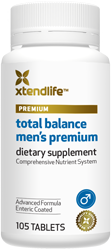Do Women Suffer From Sexual Dysfunction Like Men?
Did you know that 4 in every 10 women experience sexual dysfunction at some point in their lives? Most people aren't aware of this fact and think that impotence is strictly a male problem.

Female sexual dysfunction is a complex and problematical issue, and medical opinion on the causes and treatments vary enormously.
There's no doubt many women have been treated successfully for this issue, but health advocates claim that pharmaceutical companies are attempting to turn it into a medical diagnosis, in a race to manufacture the first female impotence pill.
A recent survey conducted on over 300 women with sexual dysfunction indicated that the focus for treatment should be on meeting their physiological and psychological needs rather than studying their medical condition.
The researchers claimed that over 45% of women in the study believed their sexual disorders could be overcome with more understanding, compassion and intimacy from their partners, rather than by taking a little blue pill like Viagra.
Many women believe in the old adage that a woman's sexuality emanates from "between her ears" not "between her thighs".
Four Types of Female Sexual Dysfunction
Female sexual dysfunction is categorized into four types of disorder:
Type 1: Lack of sexual desire
Hypoactive sexual desire disorder (HSDD) is characterized by a total lack of interest, or an aversion to sexual overtures, stimulation and sexual activity. Women who experience HSDD rarely fantasize or think about sex.
Type 2: Lack of sexual arousal
Female sexual arousal disorder (FSAD) is defined as the inability to achieve or progress through the "normal" stages of sexual arousal. Women with FSAD have no interest in initiating sex and avoid sexual contact.
Type 3: Discomfort or pain during intercourse
There are two categories within this disorder: Dyspareunia is defined as pain or extreme discomfort in the genital area, particularly the vagina, before, during or after sexual intercourse. Vaginismus is an involuntary contraction of the muscles around the vagina which makes penetration during sexual intercourse difficult or impossible.
Type 4: Inability to achieve orgasm
Female orgasmic disorder (FOD) is the inability to achieve orgasm as a result of sexual arousal or intercourse. Orgasm is a learned response for women - it isn't an inherent response as it is for men. Anorgasmia, or the inability to have an orgasm regardless of the circumstances, affects between 5% and 10% of women.
It's often the result of inexperience, a lack of understanding of the female anatomy, cultural influences, inhibitions or sexual trauma.
What Causes Female Sexual Dysfunction?
Up until recently it was believed that female sexual dysfunction was "all in the mind". The American Psychological Association still classifies female sexual problems as mental disorders.
Specialists in the field of sexual dysfunction are now looking at physical, psychological, physiological, environmental, cultural, and relationship issues to determine the overall cause of the problem.
There are a number of differing perspectives on the causes of female sexual dysfunction. These include:
Adequate blood flow to the pelvic region is a basic requirement for sexual arousal in women. Insufficient blood flow (particularly to the clitoris) impairs arousal, reduces sensitivity and causes vaginal dryness. Decreased blood flow is associated with medical conditions such as diabetes, hardening of the arteries (artherosclerosis) and heart disease.
Damage to the nervous system, particularly in the pelvic region can impair sensitivity. Diabetes affects the peripheral nervous system, as can spinal cord injury and surgery to the reproductive organs, pelvis, or lower abdomen.
Hormones, in particular estrogen and testosterone, play a vital role in a woman's sexual arousal and function. Many women experience reduced sexual desire, impaired sensitivity of the breasts and clitoris and vaginal dryness following menopause or hysterectomy.
Long-term use of the contraceptive pill can also affect hormone levels and lead to reduced sexual arousal.
Emotional and hormonal imbalances occur during and after pregnancy, particularly if a woman chooses to breast-feed. These imbalances can lead to a lack of sexual desire and reduced sensitivity.
More recently, emphasis has been placed on the partner's role in overcoming female sexual dysfunction. Poor communication, a woman's inability to express her desires, and a lack of knowledge about a woman's anatomy and the physical processes involved in sexual arousal and stimulation are considered to be prime causes of female sexual dysfunction.
Other causes may include:
Depression/anxiety disorders. The drugs used to treat these disorders also contribute to sexual dysfunction. Anti-depressants such as Prozac® and Xanax® are commonly associated with loss of sexual desire.
Stress, fatigue and other emotional factors. Concerns and stress about family, children, work, finances, household and health related issues often leave women incapable of focusing on sex.
Sexual abuse or incest.
Feelings of shame and guilt about sex.
Fear of pregnancy or sexually transmitted diseases.
Available Treatment Options For Women
Female Viagra
The question often arises: "Men have Viagra®, but what about Viagra for women?" The good news is that although drug companies haven't come up with a version of female Viagra yet, on-going research suggests that male impotence drugs like Viagra may help treat sexual dysfunction in some women.
Viagra (sildenafil) and similar impotence drugs work by increasing blood flow to the sexual organs, which heightens stimulation and sensitivity. Women who have used it report increased sexual arousal, enhanced lubrication, and more intense orgasms.
The use of Viagra for women has not been granted FDA approval, but doctors are able to prescribe it to women who they believe may benefit from this type of medication. Pfizer®, the manufacturer of Viagra, reports that well over 150,000 women have been prescribed the drug.
Non-prescription topical creams like Viacreme® and Vigorelle®, which are applied directly to the clitoris, work effectively in a number of women by dilating clitoral blood vessels and increasing blood flow, thereby heightening sensitivity and arousal.
Sexual Education
Studies by sex and behavioral therapists have shown that in a number of cases, female sexual dysfunction occurs as a result of lack of knowledge by both partners about a woman's sexuality, and her physical and psychological needs during sexual activity.
Specialized therapists suggest that both partners need to effectively communicate their stimulatory needs and desires to each other. Taking a realistic approach and examining the physical act of sexual intercourse, including foreplay, is believed to help couples discover where and how problems develop and what can be done to overcome them.
Hormone Replacement Therapy
Hormone replacement therapy (HRT) helps restore normal sexual function to women who have sexual dysfunction due to fluctuating hormone levels. These hormonal imbalances generally occur as a result of menopause, hysterectomy, hormone disorders (such as hyperthyroidism) and surgery.
A common side effect of decreased levels of estrogen, particularly in post-menopausal women, is vaginal dryness, which can be treated by using lubricants.
Hormone replacement treatment needs to be monitored carefully by a doctor to ensure the right dosage is prescribed.
Other Treatments
Like most medical disorders, the best place to start is with a visit to a medical specialist. A physical, psychological and sexual history will usually point to any underlying cause that may be contributing to female sexual dysfunction.
An effective treatment plan may involve a referral to a sex therapist, behavioral therapist, or psychologist for further evaluation, hormone treatment, or medication.
Female sexual dysfunction can occur as a result of prescription drugs, so the doctor will generally ask for a list of current medications. The contraceptive pill, anti-depressants, mood stabilizers and blood pressure drugs are all known to contribute to sexual disorders.
Featured Men's Health Supplement

Check out Total Balance Men's Premium today!
Search Our Site
| advanced |
Popular Articles
Alcohol and ED
What causes impotence?
Best Natural Treatments
Non-Drug Options
Vitamins that can help
Foods that can cause ED
Erectile Dysfunction Age


